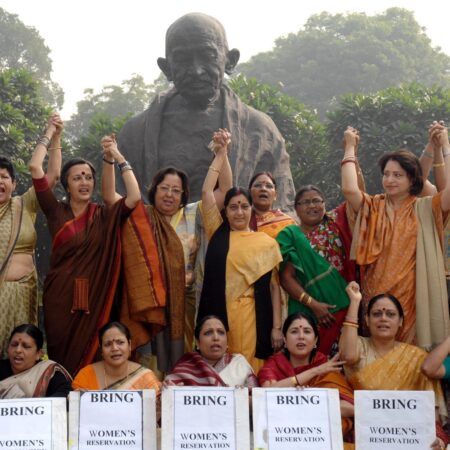
Allahabad High Court adjourned the case to May 20 due to paucity of time
Gyanvapi Mosque row in Varanasi took a turn on Monday as Hindu side claimed a “Shivling” was discovered near the “wazookhana”. A small reservoir used by Muslim devotees in Gyanvapi to perform ritual ablutions before offering the namaz.
The alleged discovery on the final day of the survey reignited the mandir-masjid debate surrounding the Gyanvapi mosque-Shringar Gauri complex. It is located near the iconic Kashi Vishwanath temple.
It was the third day of the court-ordered videography survey which received strong arguments. This was after Supreme Court denied to stay the survey on Friday and also asked the survey to be taped.
However, this is not the first time the Gyanvapi mosque has been involved in a dispute.
Legal history of Gyanvapi Mosque:
The controversy began in 1991, when some local priests claimed that Aurangzeb demolished parts of the Kashi Vishwanath temple to build a mosque. It was originally built by Maharani Ahilya Bái Holkar of Malwa kingdom. The priests also requested permission to worship in the Gyanvapi complex, claiming that there are idols of Hindu Gods there.
According to court archives and documents, many people testified in 1936 during a trial to determine the validity of the Gyanvapi mosque.
On 14 May 1937, Banaras-born historian Professor Paramatma Sharan made a statement on behalf of the British Government in which he presented excerpts from ‘Ma Asire Alam Giri,’. It is a book written by Aurangzeb’s historian that claimed Gyanvapi Mosque was a temple in the 16th century.
According to lawyer Vijay Shankar Rastogi, historical facts mentioned in general history books are admissible as evidence under Section 57 (13) of the Indian Evidence Act.
Thus, historical accounts of Altekar and the Chinese traveler Hiuen Tsang recorded under the Indian Evidence Act 1872 mention a temple and a hundred-foot-long Shiva Linga.
Version of some other historians:
Some historians disagree with the Hindu groups’ claims. They claim that Mughal emperor Akbar built the Gyanvapi mosque and the Kashi Vishwanath temple. It was to spread awareness of his Din-e-Ilahi religious system. Some historians, however, believe Aurangzeb demolished parts of the Kashi Vishwanath temple.
“According to my understanding, the Gyanvapi Masjid was built during Aurangzeb’s reign. As its qibla wall, the masjid incorporates the old Viswanath temple structure, which was destroyed on Aurangzeb’s orders. While the mosque was built during Aurangzeb’s reign, we don’t know who built it “Audrey Truschke, a historian, wrote in her book Aurangzeb: The Man and the Myth.
“The Gyanvapi masjid in Benares still stands today, with a portion of the ruined temple’s wall incorporated into the structure. This reuse was a religiously veiled warning about the dire consequences of defying Mughal authority “Truschke elaborated.
Revival of the issue:
Following the Supreme Court’s historic decision in the Babri Masjid-Ram Janmabhoomi dispute in 2019. A petition was filed in the Allahabad High Court requesting an Archeological Survey of India survey of the Gyanvapi masjid.
In a petition filed in 2021 Delhi-based women seek permission to worship Hindu deities, claiming idols are located on the mosque’s walls. They also asked for instructions not to damage Hindu God idols.
Then, in April 2022, Varanasi District Civil Court judge Ravi Kumar Diwakar ordered the advocate commissioner to conduct a survey and videography at the mosque complex. Diwakar also denied the mosque committee’s request to replace Ajay Kumar Mishra. He was the advocate commissioner to survey the Gyanvapi-Gauri Shringar complex.
Due to a lack of time, the Allahabad High Court adjourned the hearing in the Kashi-Vishwanath temple-Gyanvapi Mosque case until May 20. The Supreme Court will also hear the management of Gyanvapi mosque’s petition. It was against the complex’s survey on Tuesday.
Read More – “I will read papers and see..” CJI refuses to order status quo on Gyanvapi mosque survey












